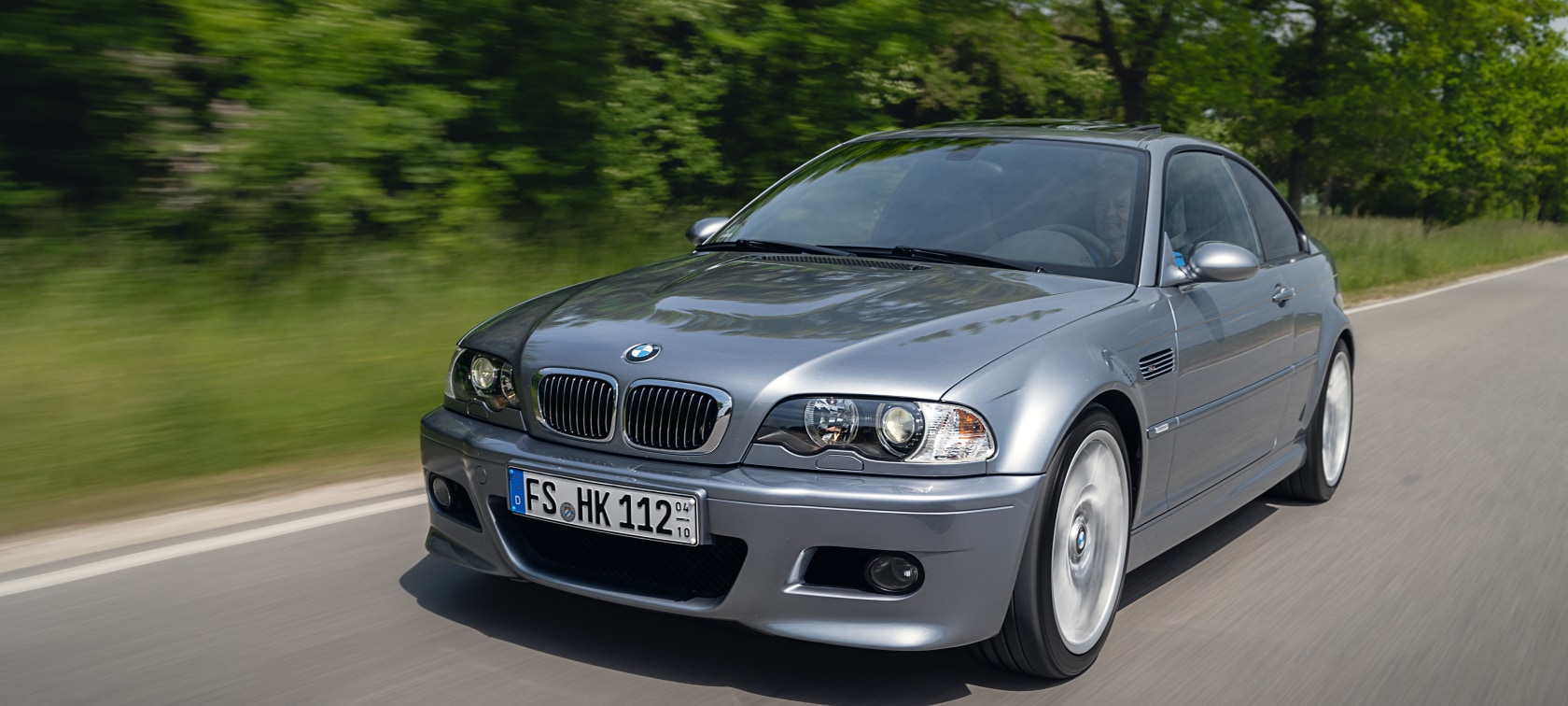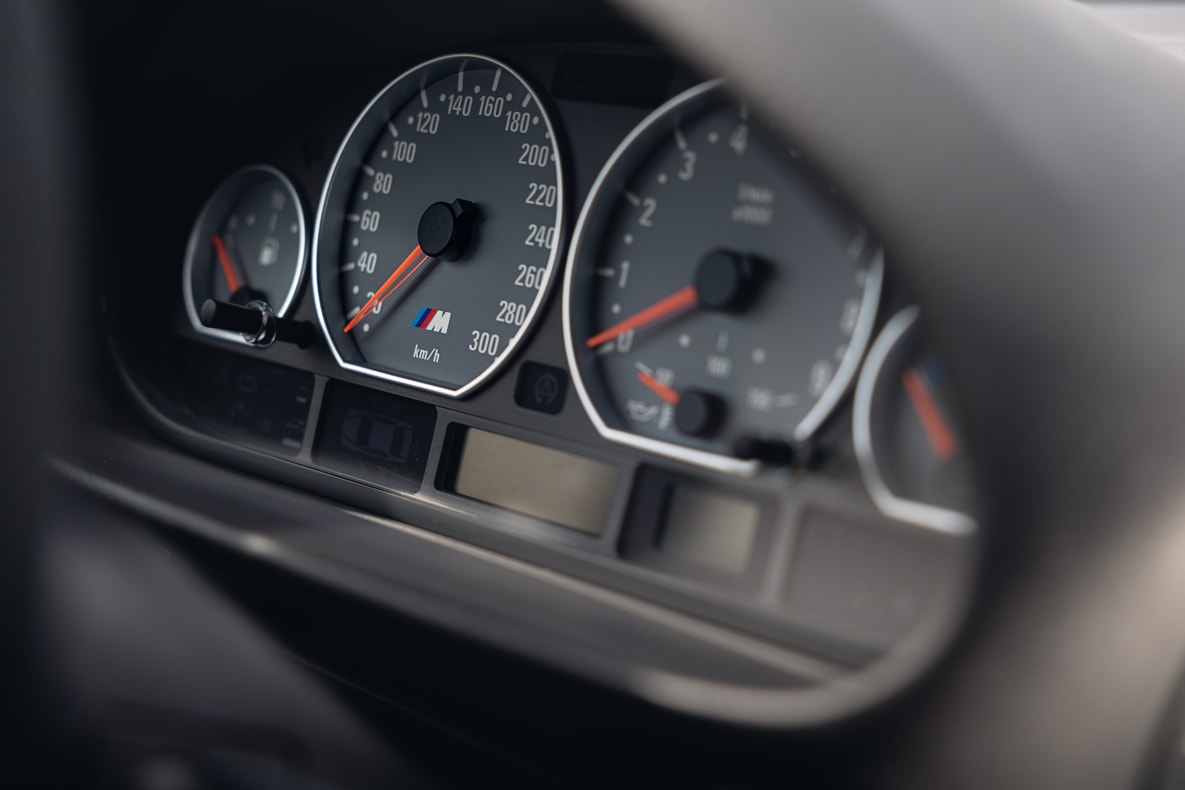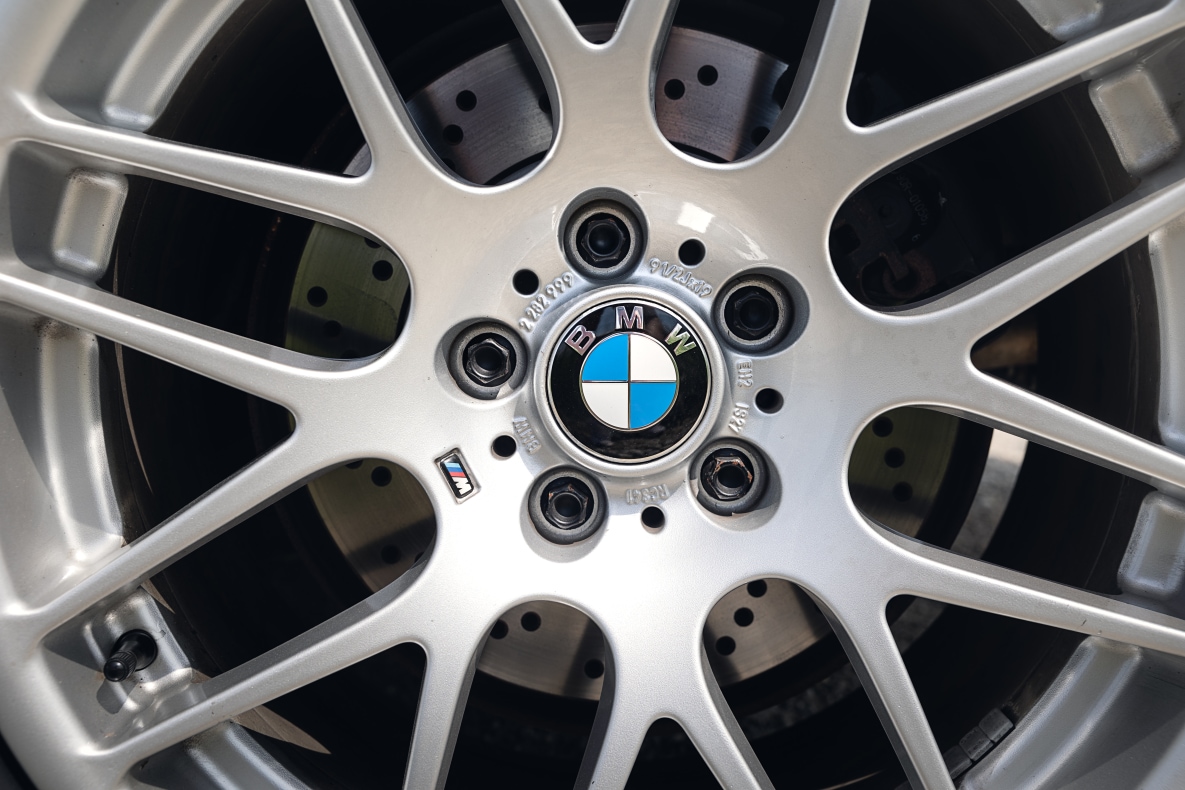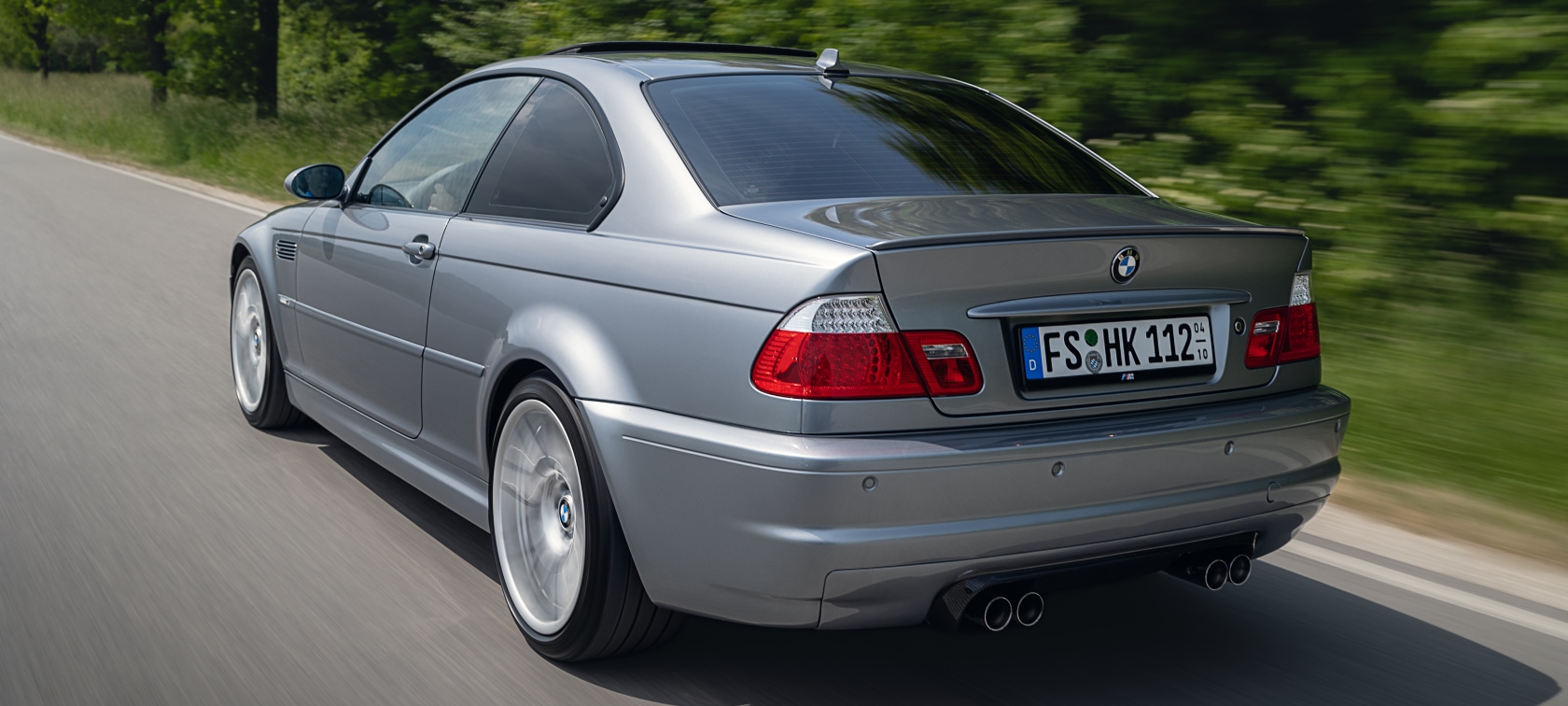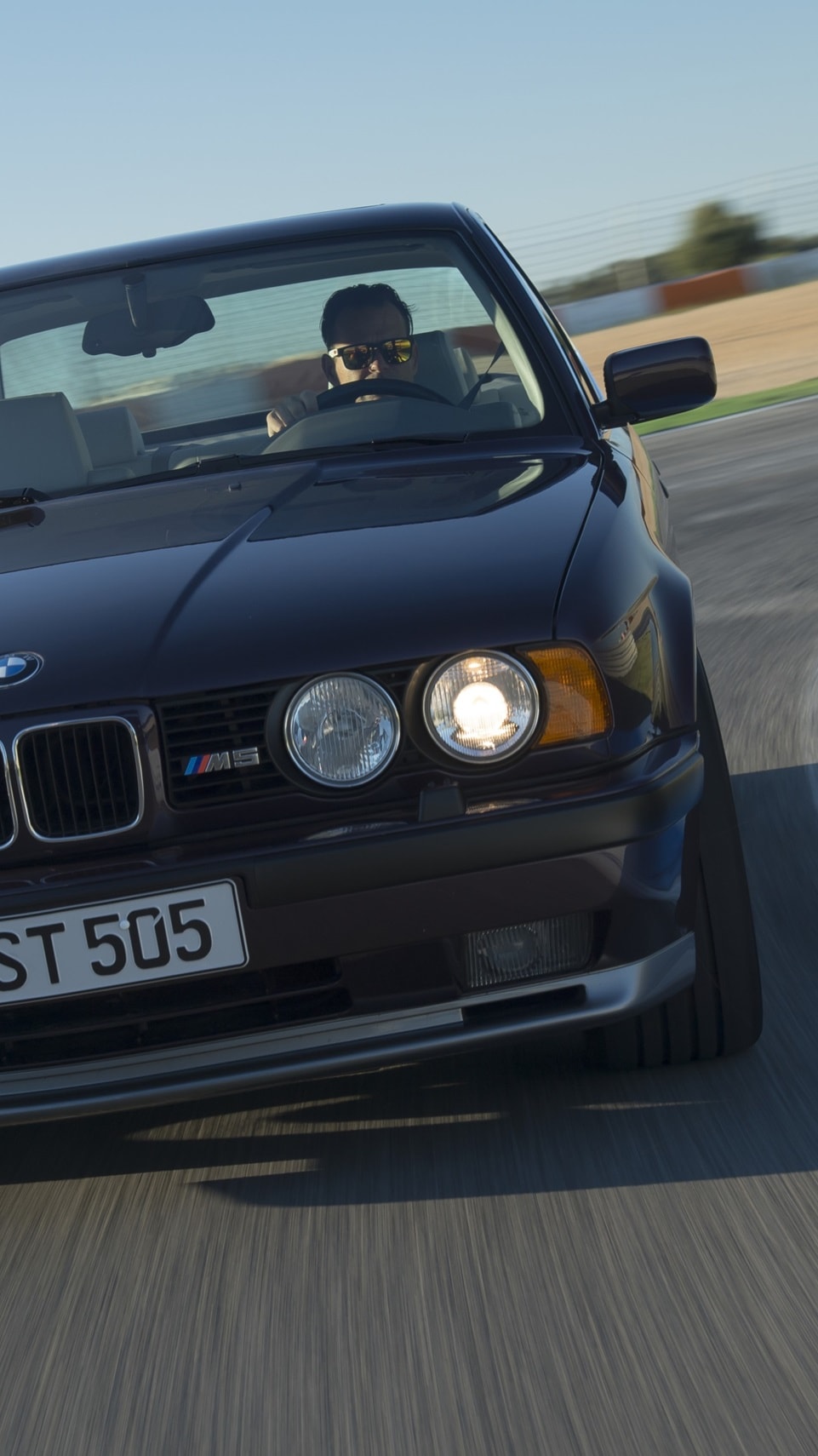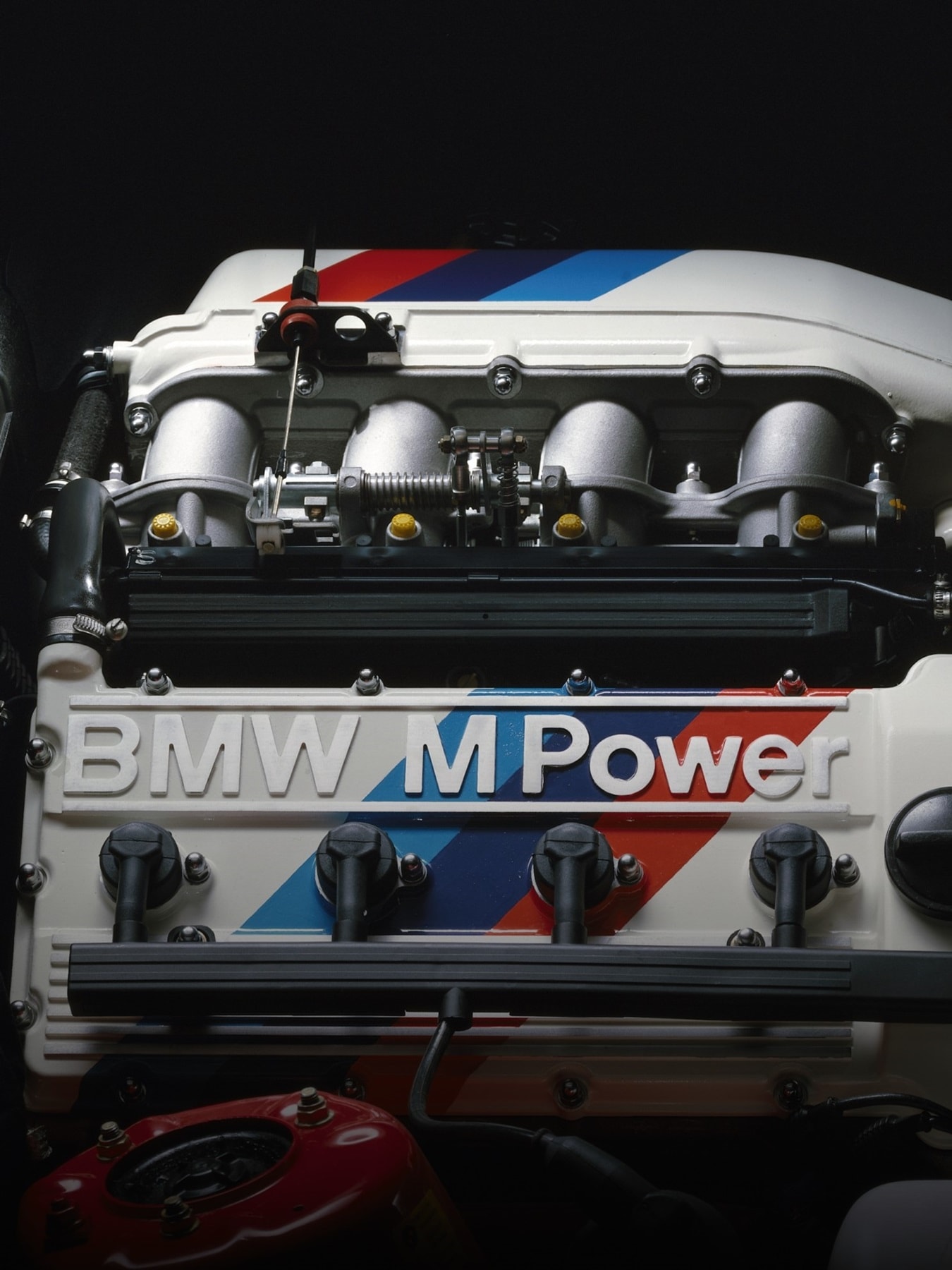There are cars that live in the shadow of their larger, more powerful or faster relatives. Often unjustly, as is the case with the BMW M3 E46 Competition belonging to BMW M development engineer Klaus Huber proves. The model is not just timelessly beautiful and M typically fast, it is impressively rare in this configuration. We met the driving dynamics expert and M3 enthusiast for an interview.

BMW M Magazine: Mr. Huber, you’re the owner of a BMW M3 E46 with Competition package. Tell us about it!
Klaus Huber: The BMW M3 is and always has been my dream car. And the M3 E46 model was a particular favourite: small, compact, high-revving, straight six-cylinder, naturally aspirated engine – just great. I’d been looking for one for some time. The ultimate would of course have been the BMW M3 CSL, but that’s a collector’s car which now commands astronomical prices. But enthusiasts know that the Competition model has some of the features of the CSL. And so I concentrated my search on this version and was lucky enough to find one a few years ago.
How did the vehicle find its way to you?
In June 2020, I bought the car with my son in Austria. It was right in the middle of the pandemic and the lockdowns – and the border checks were pretty rigorous. So transferring the car to Germany was a bit more complicated than I’d imagined. But it was worth it: this model had never been driven in winter, it was in fantastic condition with the original silver-grey CSL paintwork and on top of that had all the features I’d been looking for.
5 POWERFUL FACTS:
- Official model name: BMW M3 E46 with Competition package
- Max. output: 252 kW (343 hp)
- Many features from the BMW M3 CSL
- Paintwork: Silver-grey metallic
- Extremely rare: fewer than 400 were built

What fascinates you about this vehicle in particular?
The technical details it has in common with the M3 CSL. Like the more direct steering ratio, the bigger brakes or the chassis and shock absorber set-up and the slightly lower suspension. That all makes for a driving experience that I would without hesitation call CSL light. The fantastic spoked CSL-style rims also optically underline the performance and similarity to the top model. And then there’s another detail that the current car doesn’t have any more: the electrically operated vent windows in the rear. When they’re open, you have wonderfully cool air in summer without feeling a draught and you can hear the fantastic engine sound even better. A great feature, I love it.
The car offers a driving experience like a smaller BMW M3 CSL. And that’s basically what it is.

What’s the button on the right-hand spoke of the M steering wheel that only this model version has?
This single button on the special Alcantara steering wheel is the M Driving dynamic mode, which was employed in the BMW M3 E46 for the first time ever. When activated, the DSC control system is restrained and the dynamics and the level of freedom for the driver are increased, without having to do without the so-called lifeline if you’re in danger of skidding. For experienced drivers, this quite simply means more driving enjoyment, as the car is very easy to drive. The practical quick call-up for the system via the button was only ever built in to the M3 CSL and the Competition model.
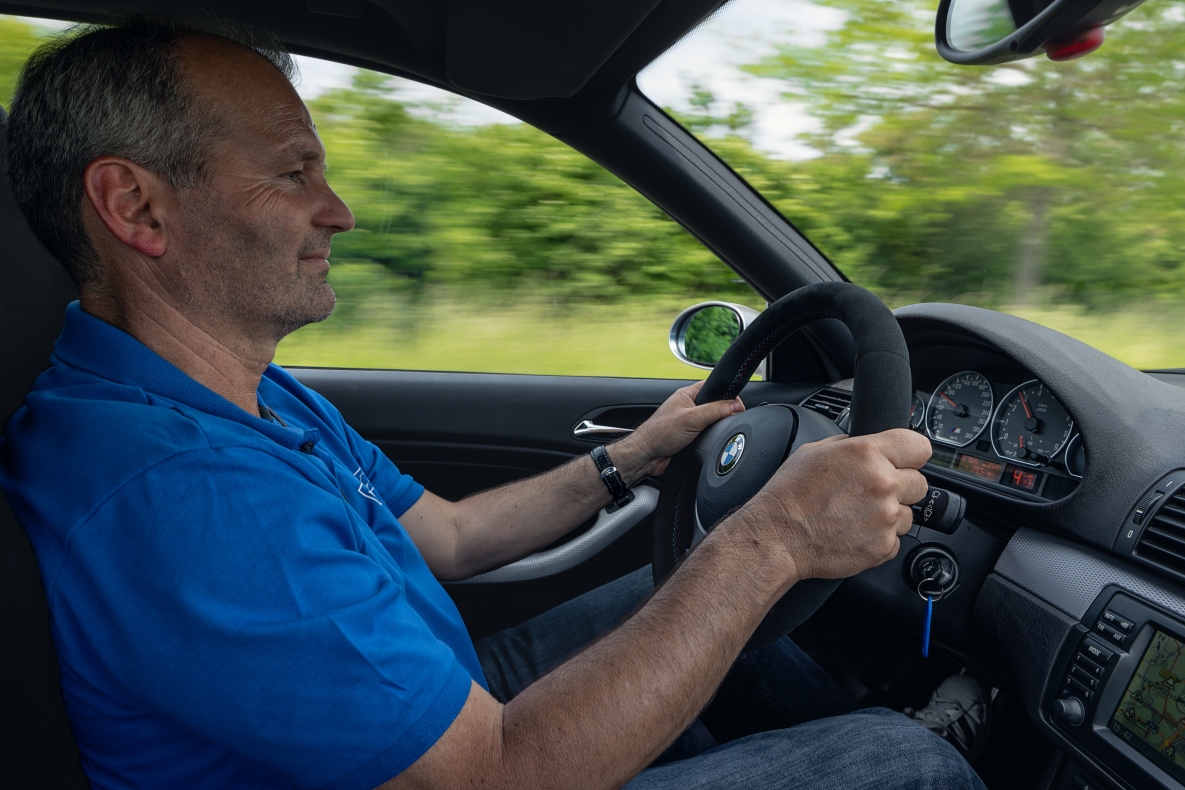
The BMW M3 with Competition package wasn’t built more than around 300 times, so it’s pretty valuable. Do you drive yours regularly?
I bought the vehicle so I could enjoy it. That means, I drive the car and enjoy every kilometre, above all in the Alps. But the M3 is not a daily drive. At a guess, I’d say I drive it for maybe 2,000 to 3,000 kilometres a year.
Are you planning to take it on to the track for a lap or two?
No, I don’t drive it on racetracks. For such purposes I would get myself a pure track tool. I want to keep the BMW M3 Competition as it was originally built and enjoy it in series form on the road.
How does it feel to drive a more than 20-year old high-performance vehicle on the road?
20 years are a lot, yes! But the drive is still absolutely fantastic. A very intense driving experience, the car gives you good feedback as far as motor response, brakes and steering are concerned and that has an immediate effect on the feeling of speed. On main roads you just feel the speed more intensely than for example with a modern vehicle. The handling and the agility are supported by the compact dimensions. Compared to a current BMW M3 G80, the overall performance is of course much lower, no question. I know the new models well from our development work and the difference made by two decades of development work is enormous. But it’s precisely the contrast of the driving experiences between these two generations that I like. In the end, it all comes down to the driving pleasure.

I love the agility of the E46, but what also impresses me is the performance of current M models. In the end, it all comes down to driving pleasure.

Is your particular model recognized in the street or is this M3 only something for real experts?
In this original configuration it’s hard to spot, the CSL wheels and the slightly lower suspension are reminiscent of many “normal” BMW M3 E46 models. All the same, many people are enthusiastic when they see my M3, because besides the features I’ve mentioned it also has the lovely silver-grey paintwork and is in great condition. It’s always a buzz when people see me on the autobahn and give me a thumbs-up!
The E46 is already a modern classic. What do you look out for when you don’t drive the car for longer periods? Is there a special “care programme” for the M3 E46 that every owner should know?
My standard procedure in autumn is relatively simple: wash the car thoroughly and raise the tyre pressure to 3.2 bar to avoid tyre damage during the winter. Then put it in the garage. Every four weeks, I top up the battery charge to avoid damage there too. Because of the relatively low mileage, as a rule I do an oil change every two years – with the original motor oil of course.

As the head of driving dynamics and tyre development at BMW M, you’re deeply involved in the development of current BMW M models: How have the cars changed over 20 years of development?
Quite a lot, some of the changes are fundamental. The first thing that comes to mind is that the new BMW M models are bigger and heavier – for reasons of active and passive safety, along with new regulations. All the same, typically for the brand the vehicles are extremely agile, nimble and characterized by an intense, highly emotional driving experience. The pure driving dynamics have been raised to an extremely high level. Whether we’re talking about lap times on the Hockenheimring, the Nürburgring Nordschleife or just longitudinal and latitudinal dynamics – the cars are much faster than 20 years ago, they’re much more precise in their handling and bodywork movement has been significantly reduced.
Now, why is that? Many individual measures have played a part: starting with a very stiff chassis which was selectively stiffened compared with the basis and now has a harmonic stiffness progression. That in turn allowed high-performance tyres and wheels to be developed which are exactly matched to the vehicle project. The chassis hardware, like axle kinematics/elasto-kinematics, steering and suspension/shock absorbers, has been further developed along with the software applications.
And then there are the driving stabilisation systems like ABS or DSC, which are now pretty well perfect in terms of sensitivity. 20 years ago, you were more or less forced to switch off the DSC to be able to drive really dynamically and achieve fast lap times. Today’s systems have control precision and balance which are so good that they’re more likely to contribute to achieving the perfect lap – you just leave the system on. The ABS in a modern BMW M is so highly developed that braking into bends is completely problem-free, the cars remain stable, agile and thus very fast. And to come back to the M Dynamic mode: in the current BMW M3 G80 models, the balance between stability and agility for M3 enthusiasts is simply superb, the precision, controllability and in the end the driving pleasure are really exciting.
Has the M3 Competition or another iconic M automobile ever inspired you in the development of a new model?
Absolutely. The basic thinking at BMW M has been the same for more than 50 years: The decisive factor is how the car feels when you’re driving it. The mobility, agility and dynamics of a vehicle like the BMW M3 E46 also have to be tangible in the new, larger models, in a new dimension of course. Technically, this driving experience is today realized with different or new means. See bodywork stiffness, axle geometry, tyre performance, intelligent all-wheel drive or all-wheel steering. But we always transport our standards as regards the dynamics to new projects, like the coming BMW M5 for instance. That too will have BMW M attributes like nimbleness, precision and predictability, and will feel a lot lighter at the wheel than it actually is.

What are your thoughts as a driving dynamics expert on fully electric powered cars?
The electric drive actually offers many opportunities to further improve driving dynamics, interpret control systems more sensitively and shape the feedback to the driver more precisely. Especially at BMW M we’re using this to give the models the M typical driving dynamics. And in future also in the high-performance area.
What is your current project at BMW M?
Alongside the BMW M5 G90 and M5 Touring G99, at the moment I’m working on the project Neue Klasse with M specific characteristics. And then we’re also thinking about successors for the X series. And there are various special models. They’re always the icing on the cake of every series!

Mr. Huber, please decide:
Rear or all-wheel drive?
Rear wheel drive!
Turbo or normally aspirated engine?
Normally aspirated engines in the past, turbos in current vehicles, that fits the different determining factors.
Two or four seats?
Four are better than two.
Manual or automatic transmission?
I’m a purist: manual.
SPORT or COMFORT mode?
30:70 – a BMW M must always also function excellently in everyday use!
Coupé or Sedan?
I like both. But the M3 Sedan is really cool.
Thank you very much for your time!

